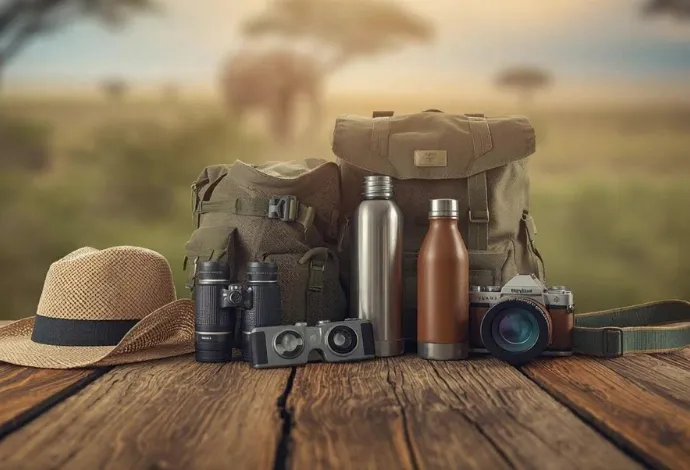What to pack for a Kruger Safari: Essentials & insider tips

Packing for a Kruger safari is both exciting and essential.
Image: Supplied
Packing for a Kruger safari is both exciting and essential. The way you prepare will determine how comfortable and relaxed you feel once you are surrounded by wildlife.
When your essentials are in order, the Kruger becomes pure freedom. You will be ready for each moment as it comes, from the hush of dawn to the soft glow of sunset across the savanna.
Kruger Park safaris combine early morning drives, long dusty roads, and evenings under the stars, so your packing list should cover all temperatures, terrains, and surprises. Here is how to get it right.
Documents, Health and Safety Items First
Start with the important items. Keep your passport, entry permits, travel insurance details, and vaccination certificates in a secure pouch that stays with you. Carry copies and store digital backups online. Some lodges and park gates will ask for identification at check-in, so have these ready.
A small first-aid kit is worth its weight in gold. Include plasters, antiseptic cream, painkillers, and antihistamines. Malaria precautions are necessary in certain parts of the park, so speak to your doctor before you travel. A strong insect repellent and mosquito wipes are essential.
Always pack sunscreen with a high SPF, protective lip balm, and after-sun lotion to manage the African sun. A tiny bottle of detergent helps if you need to wash clothes by hand between drives.
Keep Your Clothing Neutral, Comfortable, and Layered
Clothing should be practical rather than flashy. Neutral tones such as beige, khaki, olive, and brown help you blend into the environment and reduce attention from insects. Bright colours and white clothing can stand out too much, so avoid them.
Temperatures in Kruger vary widely. Mornings and evenings can be very cold, even in summer, while midday can be extremely hot. Layering is the key. Bring long-sleeved shirts for sun and insect protection, T-shirts for the heat, and a fleece or light jacket for the chill of dawn drives. A foldable rain jacket is useful, especially from November to March when afternoon showers are common. For trousers, choose light breathable fabrics. Convertible safari trousers that zip off into shorts are particularly practical.
Footwear and Accessories
Good shoes are crucial. Closed trainers or walking shoes are perfect for vehicle drives. If you are doing guided walking safaris, pack sturdy hiking shoes that are already worn in. Around the camp, sandals or flip-flops are fine.
A wide-brimmed hat is essential for sun protection, and a lightweight scarf or buff is handy against wind and dust. Sunglasses with UV protection complete the look and protect your eyes from glare.
Don’t Forget Cameras, Binoculars and Tech Gear
Photography is one of the biggest joys of Kruger Park safaris, so plan your tech gear carefully. A good zoom lens will help capture animals from a safe distance. Bring extra memory cards and fully charged spare batteries because you may not find charging points during long drives.
Binoculars make a big difference, especially for spotting birds or animals far across the plains. Keep your gear in a dustproof bag or padded case.
South Africa uses Type C and M plugs with 220-240 volts, so pack the right adaptor. A power bank or multi-USB charger will also come in handy.
Game Drive Essentials
Keep a small backpack ready for each game drive. It should contain sunscreen, insect repellent, lip balm, tissues, wet wipes, snacks, a refillable water bottle, and your camera. Add a lightweight jacket or shawl for sudden temperature changes.
Having this daypack organised means you can focus on the wildlife rather than your belongings.
Choose Applicable Luggage
Soft-sided duffel bags work best because many safari transfers and light aircraft have strict weight limits, usually around 20 kilograms.
Hard suitcases take up too much space in vehicles. Use packing cubes to organise clothes and keep out dust.
Many lodges offer same-day laundry service, so you can travel lighter and reuse clean clothes during your stay.